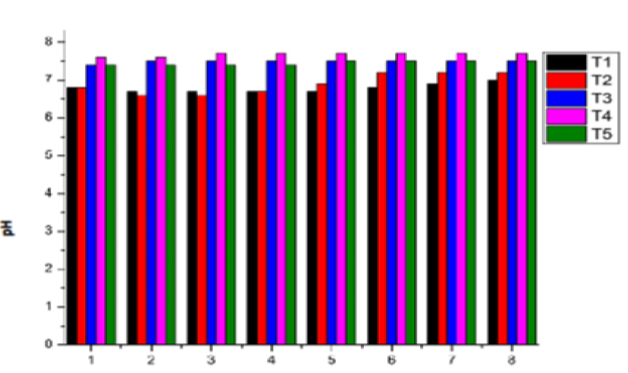


Indian Journal of Science and Technology
Year: 2021, Volume: 14, Issue: 3, Pages: 220-228
Original Article
P Deebika1, A Merline Sheela1*, R Ilamathi1
1Centre for Environmental Studies, Anna University, Chennai, 600025, Tamil Nadu, India. Tel.: + 919884216255
*Corresponding Author
Tel: + 919884216255
Email: [email protected]
Received Date:23 July 2020, Accepted Date:12 January 2021, Published Date:27 January 2021
Objectives: To study the effect of compost and biochar on phytoremediation of crude oil-contaminated soil. Methods: An attempt was made to remediate crude oil contaminated soil, using the phytoremediation method. The soil was amended with biochar and compost. Initially, the pH, moisture content and C/N ratio of the soil and amendments were determined. A pot culture experiment was conducted to study the effect of the amendments on the degradation of the Total Petroleum Hydrocarbons (TPH) in the crude oil contaminated soil using the plant species nutgrass (Cyperus rotundus). To avoid seepage of water from the pots plastic pots were used. The initial concentration of TPH was found to be 17mg/kg soil. The experiment was conducted from January to March 2019. No microorganism was inoculated either to enhance the growth of the plant or degrade the hydrocarbon. The study was conducted with natural microflora. The pots were kept (open) under direct sunlight with 8 hours of photoperiodism. The plants were watered daily with tap water to maintain optimum moisture content. Once in 15 days, the soil samples collected from each treatment were analysed for pH, moisture content and C/N ratio. The TPH removal rate was determined for the 45th day and 60th day. Findings: The soil amended with compost (200 kg/soil) and biochar (50 kg/soil) enhanced the degradation of TPH by the plant species. The highest degradation percent of 62.2 and 77.1% was achieved on 45th and 60th day respectively in the treatment T5 (amended with biochar and compost). Further, there was an increase in shoot length (54.52 cm/plant), root biomass (0.74 g/plant) and shoot biomass (5.08g/plant) of the plants in the biochar and compost amended soil which was comparable with the results of the treatment T2 (Plants were grown in soil without crude oil contamination). Applications: Biochar and compost amendment improves the water holding capacity and nutrient status of the soil, thereby enhancing the growth of TPH degraders in soil. Hence, from the study, it is understood that biochar and compost could be used for phytoremediation of crude oil contaminated soils.
Keywords: Amendments; degradation of TPH; nutgrass
© 2021 Deebika et al.This is an open access article distributed under the terms of the Creative Commons Attribution License, which permits unrestricted use, distribution, and reproduction in any medium, provided the original author and source are credited. Published By Indian Society for Education and Environment (iSee)
Subscribe now for latest articles and news.